Metabolic shift towards oxidative phosphorylation reduces cell-density-induced cancer-stem-cell-like characteristics in prostate cancer in vitro
- PMID: 36919762
- PMCID: PMC10110405
- DOI: 10.1242/bio.059615
Metabolic shift towards oxidative phosphorylation reduces cell-density-induced cancer-stem-cell-like characteristics in prostate cancer in vitro
Abstract
Numerous cancer patients undergoing conventional cancer therapies such as radiotherapy, chemotherapy and surgical tumour removal face relapses several years or even decades later. This may be due to the presence of cancer stem cells (CSCs) that survived said therapies. In this study, we aimed to uncover the relationship between cell density and CSCs, and the role of the Warburg effect in regulating CSC-like characteristics. A prostate cancer cell line, PC3, was used in this study. To investigate the Warburg effect effect and CSC-like characteristics in prostate cancer, we measured the expression levels of glycolysis and OXPHOS-related genes, and performed spheroid forming, cell viability and various glycolysis and OXPHOS-assays. We observed that increased cell density caused a metabolic shift from glycolysis to OXPHOS and higher CSC-like characteristics. However, the use of dichloroacetate (DCA), an inhibitor of the Warburg effect, significantly inhibited the cell-density-induced metabolic shift and CSC-like characteristics. Changes in cell density strongly influenced the preferred metabolic pathway of prostate cancer cells, regulating their CSC-like characteristics. It is possible that DCA, an inhibitor of the Warburg effect, could be a novel drug used to treat CSCs by distinguishing Warburg effect, preventing future cancer relapses.
Keywords: Cancer stem cell; Glycolysis; Oxidative phosphorylation; Prostate cancer; Warburg effect.
© 2023. Published by The Company of Biologists Ltd.
Conflict of interest statement
Competing interests The authors declare no competing or financial interests.
Figures
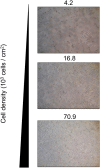
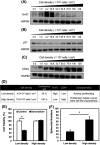
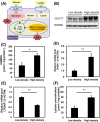
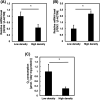
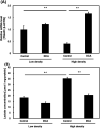
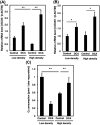
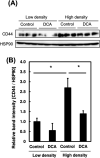
Similar articles
-
Application of mitochondrial pyruvate carrier blocker UK5099 creates metabolic reprogram and greater stem-like properties in LnCap prostate cancer cells in vitro.Oncotarget. 2015 Nov 10;6(35):37758-69. doi: 10.18632/oncotarget.5386. Oncotarget. 2015. PMID: 26413751 Free PMC article.
-
The Metabolic Landscape of Cancer Stem Cells: Insights and Implications for Therapy.Cells. 2025 May 15;14(10):717. doi: 10.3390/cells14100717. Cells. 2025. PMID: 40422220 Free PMC article. Review.
-
Cancer stem cell molecular reprogramming of the Warburg effect in glioblastomas: a new target gleaned from an old concept.CNS Oncol. 2016;5(2):101-8. doi: 10.2217/cns-2015-0006. Epub 2016 Mar 21. CNS Oncol. 2016. PMID: 26997129 Free PMC article. Review.
-
Hallmarks of cancer stem cell metabolism.Br J Cancer. 2016 Jun 14;114(12):1305-12. doi: 10.1038/bjc.2016.152. Epub 2016 May 24. Br J Cancer. 2016. PMID: 27219018 Free PMC article. Review.
-
Uncoupling Warburg effect and stemness in CD133+ve cancer stem cells from Saos-2 (osteosarcoma) cell line under hypoxia.Mol Biol Rep. 2018 Dec;45(6):1653-1662. doi: 10.1007/s11033-018-4309-2. Epub 2018 Aug 20. Mol Biol Rep. 2018. PMID: 30128626
Cited by
-
Dichloroacetate for Cancer Treatment: Some Facts and Many Doubts.Pharmaceuticals (Basel). 2024 Jun 6;17(6):744. doi: 10.3390/ph17060744. Pharmaceuticals (Basel). 2024. PMID: 38931411 Free PMC article. Review.
-
Drug Repurposing: A Conduit to Unravelling Metabolic Reprogramming for Cancer Treatment.Mini Rev Med Chem. 2025;25(8):601-627. doi: 10.2174/0113895575339660250106093738. Mini Rev Med Chem. 2025. PMID: 39835565 Review.
-
Estrogen-related receptor alpha (ERRα) controls the stemness and cellular energetics of prostate cancer cells via its direct regulation of citrate metabolism and zinc transportation.Cell Death Dis. 2025 Mar 5;16(1):154. doi: 10.1038/s41419-025-07460-z. Cell Death Dis. 2025. PMID: 40044646 Free PMC article.
-
Synergistic ROS Reduction Through the Co-Inhibition of BRAF and p38 MAPK Ameliorates Senescence.Antioxidants (Basel). 2024 Nov 28;13(12):1465. doi: 10.3390/antiox13121465. Antioxidants (Basel). 2024. PMID: 39765794 Free PMC article.
-
Transcending frontiers in prostate cancer: the role of oncometabolites on epigenetic regulation, CSCs, and tumor microenvironment to identify new therapeutic strategies.Cell Commun Signal. 2024 Jan 12;22(1):36. doi: 10.1186/s12964-023-01462-0. Cell Commun Signal. 2024. PMID: 38216942 Free PMC article. Review.
References
-
- Bahmad, H. F., Cheaito, K., Chalhoub, R. M., Hadadeh, O., Monzer, A., Ballout, F., El-Hajj, A., Mukherji, D., Liu, Y. N., Daoud, G.et al. (2018). Sphere-formation assay: three-dimensional in vitro culturing of prostate cancer stem/progenitor sphere-forming cells. Front. Oncol. 8, 347. 10.3389/fonc.2018.00347 - DOI - PMC - PubMed
Publication types
MeSH terms
LinkOut - more resources
Full Text Sources
Medical

